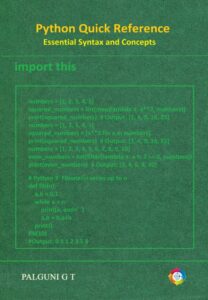Quantum particles are the smallest, indivisible units of matter and energy as described by quantum physics. These particles follow the rules of quantum mechanics, which is a branch of physics dealing with physical phenomena at nanoscopic scales, where the classical laws of physics no longer apply.
🔹 What Does “Quantum” Mean?
The word quantum (plural: quanta) comes from Latin meaning “how much” and refers to the smallest discrete unit of a physical quantity. In quantum mechanics, things like energy, matter, charge, and momentum come in fixed “chunks” rather than being infinitely divisible.
- A quantum of light is called a photon.
- A quantum of electricity is an electron.
- Energy in atoms is transferred in discrete quanta, not continuous amounts.
🌌 What Are Quantum Particles?
Quantum particles are the building blocks of the universe, and they exist in two main categories based on their role and properties:
1. Fermions – Matter Particles 🧱
These are the particles that make up all matter. They follow the Pauli Exclusion Principle, which means no two identical fermions can occupy the same quantum state at the same time. This is why matter takes up space and doesn’t collapse into itself.
➤ Types of Fermions:
a) Leptons:
- Electron (e⁻) – carries electric charge; found in atoms.
- Neutrinos (ν) – extremely light, neutral particles that rarely interact with matter.
There are 3 types of each: electron, muon, and tau, along with their corresponding neutrinos.
b) Quarks:
- Combine to form protons and neutrons.
- Six “flavors”: up, down, charm, strange, top, bottom.
- Always found in combinations (never alone due to a principle called “confinement”).
c) Composite Fermions:
- Proton = 2 up quarks + 1 down quark
- Neutron = 2 down quarks + 1 up quark
2. Bosons – Force Carriers ⚡
Bosons are particles that carry forces between matter particles. Unlike fermions, bosons can occupy the same state at the same time, which allows them to act as force fields.
➤ Types of Bosons:
a) Photon (γ) – carrier of electromagnetic force (e.g., light).
b) Gluon (g) – carrier of the strong nuclear force, which holds quarks together inside protons and neutrons.
c) W and Z Bosons – carriers of the weak nuclear force, responsible for radioactive decay.
d) Higgs Boson – gives mass to other particles through the Higgs field.
e) Graviton (theoretical) – hypothesized carrier of gravity (not yet observed).
3. Composite Particles – Made of Quarks or Other Particles 🧩
These are particles made from combinations of quarks or other quantum particles.
➤ Types of Composite Particles:
a) Baryons (made of 3 quarks):
- Examples: Protons, Neutrons
b) Mesons (made of 1 quark + 1 antiquark):
- Short-lived particles found in high-energy physics experiments or cosmic rays.
These composite particles interact via the strong force, and most are unstable except for the proton, which is stable in normal conditions.
🧬 Summary Table:
| Category | Subtypes | Examples | Role |
|---|---|---|---|
| Fermions | Leptons, Quarks | Electron, Neutrino, Quark | Make up matter |
| Bosons | Force Carriers | Photon, Gluon, W/Z Bosons, Higgs | Carry forces |
| Composite Particles | Baryons, Mesons | Proton, Neutron, Pions | Made from quarks |
🔭 Why Quantum Particles Matter
Everything in the universe is built from quantum particles.
Their interactions explain chemical reactions, radioactivity, light, gravity, and even the Big Bang.
Technologies like lasers, semiconductors, MRI machines, and quantum computers are based on understanding these particles.


